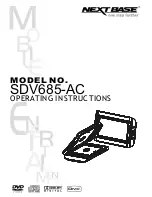
16
The output of the generator varies due to
change temperature, altitude (lower air
pressure at higher altitude) and humidity.
The output of the generator is reduced
when the temperature, the humidity and
the altitude are higher than standard
atmospheric conditions.
Additionally, the load must be reduced
when using in a confined areas, as
generator cooling is affected.
DANGER: CARBON
MONOXIDE.
Using a generator indoors CAN KILL YOU
IN MINUTES.
Generator exhaust contains carbon
monoxide (CO). This is a poison gas you
cannot see or smell. If you can smell the
generator exhaust, you are breathing CO.
Even if you cannot smell the exhaust, you
may be breathing CO.
NEVER use a generator inside homes,
garages, crawlspaces, or other partly
enclosed areas. Deadly levels of carbon
monoxide can build up in these areas.
Using a fan or opening windows and doors
does NOT supply enough fresh air.
ONLY use a generator outside and far
away from windows, doors, and vents.
These openings can pull in generator
exhaust. Even if you use a generator
correctly, CO may leak into the home.
ALWAYS use a battery- powered or
battery-backup CO alarm in the home.
If you start to feel sick, dizzy, or weak
after the generator has been running,
move to fresh air RIGHT AWAY. See a
doctor. You may have carbon monoxide
poisoning.
WARNING:
This generator
produces powerful voltage, which can
result in electrocution.
ALWAYS
ground the generator before
using it (see the “Ground the Generator”
portion of the “Generator Preperation”
section).
- Generator should only be plugged into
electrical devices, either directly or with
an extension cord. NEVER connect to a
building electrical system without a
qualified electrician. Such connections
must comply with local electrical laws
and codes. Failure to comply can create a
back-feed, which may result in serious
injury or death to utility workers.
- Use a ground fault circuit interrupter
(GFCI) in highly conductive areas such as
metal decking or steel work. GFCIs are
available in-line with some extension
cords.
- Do not use in rainy or wet conditions.
- Do not touch bare wires or receptacles
(outlets).
- Do not allow children or non-qualified
persons to operate.
CAUTION:
Disconnect all
electrical loads from the generator before
attempting to start.
STARTING THE ENGINE
1. Unplug all electrical devices from the
generator during starting. Otherwise it
can be difficult for the engine to start.
Summary of Contents for A112004
Page 39: ...39 WIRING DIAGRAM...
















































